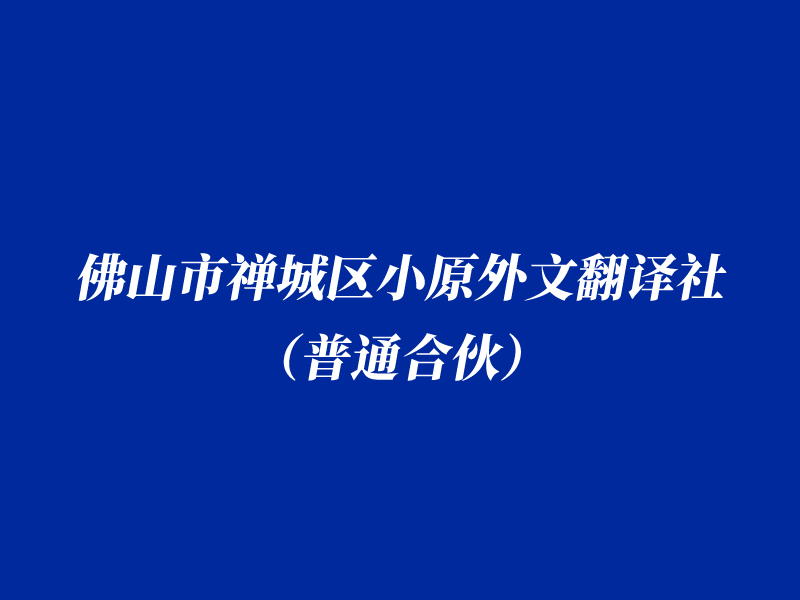Jun
2023
对于用户和佛山翻译公司来说,翻译的质量好坏非常重要,不同译员的的翻译结果都不是完全相同的,下面证件翻译公司给大家说说翻译质量受什么因素的影响?
For users and translation companies, the quality of translation is very
important. The translation results of different translators are not identical.
What factors affect the quality of translation?
1、语义理解障碍
1. Obstacles to Semantic Understanding
阅读和分析原文阶段,原文的语义含糊性和句法复杂性是影响等值程度**主要的因素。由于原文有意无意的语义含糊,译者很难确定原文的真实语义,不同的人也有不同的理解,也就产生不同的译文。
In the stage of reading and analyzing the original text, the semantic
ambiguity and syntactic complexity of the original text are the most important
factors affecting the degree of equivalence. Because of the intentional or
unconscious semantic ambiguity of the original text, it is difficult for the
translator to determine the true meaning of the original text. Different people
have different understandings, so different translations are produced.
要克服语义含糊,准确传达原文语义就要求译者对原语有较高的把握能力,尽可能综合考虑与原文语义相关的所有因素,挖掘出原文真实内涵。即便如此也难实现绝对的“等值”。
To overcome semantic ambiguity and convey the original semantics
accurately, translators are required to have a high grasp of the source
language, take all the factors related to the original semantics into
consideration as far as possible, and excavate the true connotation of the
original text. Even so, it is difficult to achieve absolute "equivalence".
原文句法过于复杂也是译者遇到的比较棘手的问题,翻译前译者不得不将复杂的句法重新梳理一遍,即先进行语内翻译,然后再转换成译语,这也在一定程度上影响了等值程度。
The complexity of the original sentence is also a thorny problem for the
translator. Before translation, the translator has to reorganize the complex
syntax, that is, to translate it into the target language first and then into
the target language, which also affects the equivalence to a certain extent.
2、表达方式相异
2. Different expressions
分析完原文后,在原文转换成译文阶段,译者同样遇到很多影响等值的因素,大都与表达方式、文体风格有关。原文里同一个句法单位,译文通常都有几种等值程度不一的表达方式与之对应(固定用法除外),表达方式的取舍在一定程度上决定了译文等值程度的高低。
After analyzing the source text, translators also encounter many factors
affecting equivalence, mostly related to the way of expression and style. In the
same syntactic unit of the original text, the translation usually has several
expressions with different equivalence (except for fixed usage). To some extent,
the choice of expression determines the degree of equivalence of the
translation.
我们的取舍原则是选择**自然的对等物,即采用**符合译语表达习惯及惯用语搭配的表达方式。
Our principle of choice is to choose the most natural equivalents, that is,
to adopt the expressions that are most in line with the conventions and
collocations of idioms in the target language.
3、语法结构不同
3. Different Grammatical Structures
不同语言有不同的语法范畴、语法规则和语法结构,这些不同导致它们传达信息的方式也不同。译文语言若缺失原文语言的某种语法范畴或结构,则在译文中很难找到一个与原文直接对应的对等物,译者也不得不对原文的信息或增或删、做出某些取舍。在这些影响翻译的语法范畴中,尤其强调数、性、时态和语体、语态、人称。
Different languages have different grammatical categories, rules and
structures, which lead to different ways of conveying information. If the target
language lacks some grammatical category or structure of the source language, it
is difficult to find a direct equivalent in the target text, and the translator
has to add or delete the information of the source text and make some
trade-offs. Among these grammatical categories that affect translation, emphasis
is placed on number, sex, tense, style, voice and person.
因此,不同语言之间的语法差异也是影响等值程度的一个重要因素。语法差异越大,达到等值的难度也就越大。
Therefore, the grammatical differences between different languages are also
an important factor affecting the degree of equivalence. The greater the
difference in grammar, the more difficult it is to achieve equivalence.
4、文章体裁
4. Style of Articles
文章体裁是影响翻译等值程度一个很重要的因素。不同体裁具有不同的功能,是表情功能、信息功能抑或呼语功能,这在翻译中都不能忽视。奈达在论述“动态对等”时提出的四条原则之一便是译文与原文的文学体裁所起的作用一致。
Genre is a very important factor affecting translation equivalence.
Different genres have different functions, such as expressive function,
informative function or vocative function, which can not be ignored in
translation. One of the four principles Nida put forward when discussing
"dynamic equivalence" is that the literary genre of the original text plays the
same role.
5、文化背景
5. Cultural Background
不同民族拥有不同的历史背景、思维模式、社会习俗,于是形成自己独特的文化背景,这些文化差异都会承载于各自不同的语言当中。正确理解原文的文化内涵,分析原语和译语的文化差异是做到等值翻译的一个前提条件。一般来说,两种语言文化之间差异越大,这两种语言之间的等值转换就越难,等值程度也越会受到影响。
Different nationalities have different historical backgrounds, modes of
thinking and social customs, thus forming their own unique cultural background,
these cultural differences will be carried in their different languages. Correct
understanding of the cultural connotations of the source text and analysis of
cultural differences between the source language and the target language are
prerequisites for equivalence translation. Generally speaking, the greater the
difference between the two languages and cultures, the more difficult the
equivalence conversion between the two languages will be, and the more the
degree of equivalence will be affected.
我们在翻译中只有充分考虑到这种文化差异性,尽量将原语的文化信息、文化内涵用符合译语文化习惯的表达方式表现出来,这样才能达到较高程度的等值。
Only when we fully consider this cultural difference in translation and try
to express the cultural information and connotation of the source language in a
way consistent with the cultural habits of the target language, can we achieve a
higher degree of equivalence.
上一篇:法律翻译的技巧
下一篇:法律翻译需要怎样进行?
- [03-27] 专业翻译公司分享交替传译的要点
- [06-05] 翻译,跨文化河流的摆渡者
- [12-29] 英语文学翻译中应注意哪些问题
- [06-30] 多语言排版的注意事项
- [12-18] 翻译公司存在哪些误区?
- [09-28] 语言服务助力国内企业“走出去”
- [10-30] 护照翻译有哪些细节需要注意
- [07-10] 语言服务提供商提供什么服务?

-
地址1:佛山市禅城区汾江中路144号科华大厦1002室(创业大厦正对面)
电话:0757-82285965 13318391728
-
地址2:佛山市禅城区魁奇路澜石(国际)金属交易中心大厅一楼
电话:0757-82285965 13318391728




